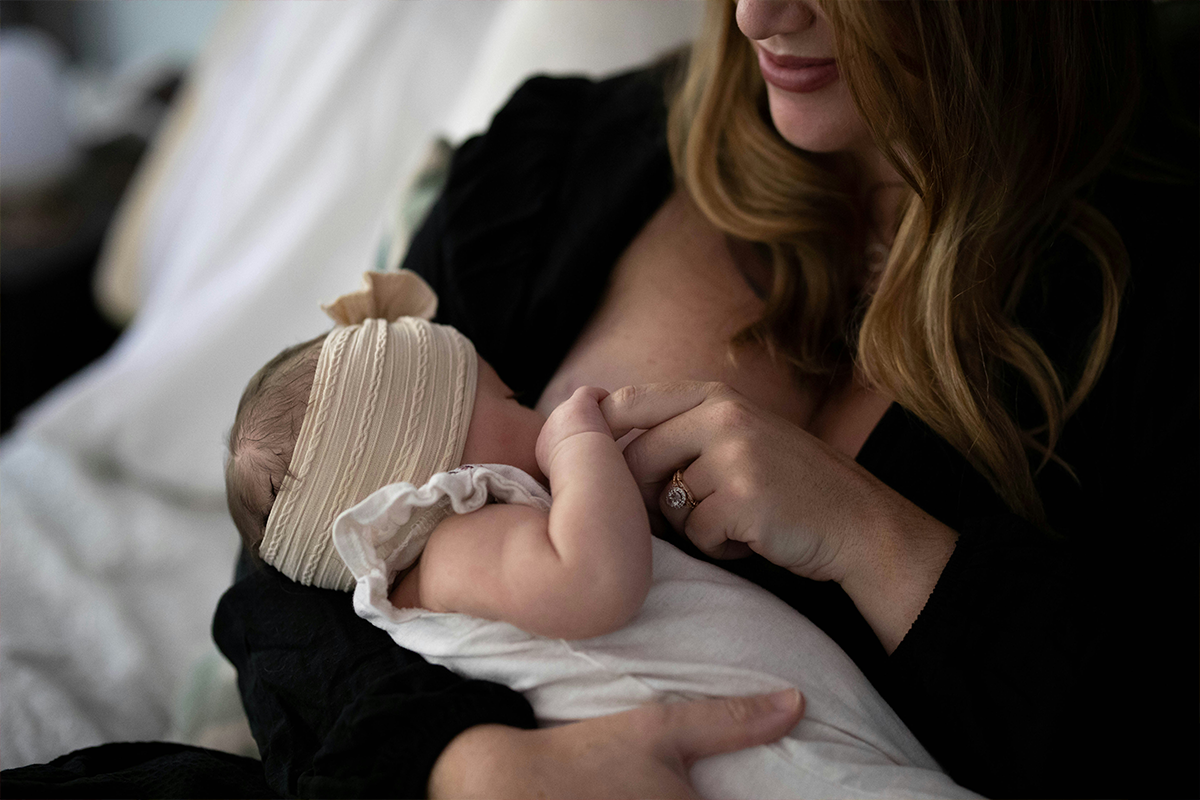Ah, the joys and challenges of breastfeeding! Many nursing parents share concerns about whether pumping will cause discomfort. Trust me, pumping shouldn't be a painful experience. Whether you're a pumping pro or just getting started, this guide will walk you through tips to ease any soreness and improve your overall pumping experience. From finding the right flange fit to mastering proper positioning, we'll cover everything you need to make pumping sessions smoother and more enjoyable.
Common reasons pumping might hurt
Pumping should be a comfortable experience, but sometimes it can cause discomfort or pain. Understanding the common reasons why pumping might hurt can help you address issues and make the process more comfortable. Let's explore some of the main culprits:
Incorrect flange size
No matter which pump you choose it is important to make sure the flange fits properly.
💡 Using the wrong flange size is a frequent cause of pumping discomfort.
If the flange is too small, it can cause friction and pinching, while a flange that's too large may not create proper suction. Ensuring the breast pump flange is the right size for your nipple and areola is crucial for comfortable pumping.
Check out our flange size guide for tips on finding the perfect fit. And don’t forget, it is possible to need a different size flange for each breast. Bodies are not always symmetrical.
Get comfortable
Your pumping sessions will be more productive and enjoyable if you are able to feel at ease. Stress can inhibit the milk flow, so it is important to make sure your environment feels as relaxing as possible.
Suction settings and positioning
Excessive suction or improper pump positioning can lead to pain. It's important to start with a lower suction setting and gradually increase it to a comfortable level.
Additionally, make sure the pump is positioned correctly on your breast to avoid unnecessary friction or pressure. For more guidance on how to use a wearable breast pump, check out our comprehensive guide.
Engorgement and clogged milk ducts
Engorgement occurs when breasts become overly full and hard, making pumping uncomfortable. Using warm compresses and gentle massage (1) before pumping to help relieve engorgement or clogged duct.
Clogged milk ducts can create painful lumps in the breast, make sure your baby is feeding as much as possible in the early days to empty your breast. You can also apply warm compresses.
Cracked or sore nipples
Nipple trauma from incorrect latch or pumping technique can lead to soreness and cracking. Use expressed breast milk (2) to soothe sore nipples.
💡 Persistent pain during pumping is not normal and should be addressed.
By identifying and resolving common issues like incorrect flange size, excessive suction, engorgement, clogged ducts, or nipple trauma, you can make your pumping experience more comfortable and effective.
If discomfort persists, don't hesitate to seek guidance from a lactation consultant or healthcare provider.
How to make pumping more comfortable?
Pumping doesn't have to be a painful experience. With the right approach and tools, you can make your pumping sessions more comfortable and productive. Here are some tips to help ease discomfort and optimize your pumping routine:
Find the right pump
A well-fitting pump with customizable suction can significantly reduce discomfort and improve milk output. The Perifit Pump offers soft silicone breast pump flanges in 5 sizes to ensure a comfortable fit for optimal flow, as well as a suction mode that can be adjusted to your preference.
💡 Using a pump that can express milk from both breasts at the same time will save some time! It also provides very strong stimulation to keep a good milk supply.
Apply lubrication
Applying a small amount of lanolin or other nipple-safe lubricant to the flanges can help reduce friction and make pumping more comfortable. This simple step can make a big difference, especially if you experience dryness or irritation.
Remember to use products specifically designed for breastfeeding to ensure they're safe for both you and your baby.
Try breast massage before pumping
Gently massaging your breasts before and during pumping can help stimulate milk flow and prevent discomfort. Using a warm compress or light massage (3) to encourage milk letdown and maximize output. You can also take a warm shower before expressing.This technique can also help prevent plugged ducts, which can cause pain and discomfort during pumping.
Create a relaxing environment
Oxytocin is the hormone that triggers your milk ejection reflex. It is important to be mindful of this when expressing. Setting up a comfortable pumping space can make a world of difference. Find a quiet area where you can relax without interruptions. Some people find it helpful to look at photos of their baby or listen to soothing music to help trigger the letdown reflex. If you are able to cuddle your baby while expressing, you may also increase your milk output.
Pump settings
Pumps have different suction and cycles settings. Start with a low suction and high cycles to stimulate. Once your milk starts flowing, you can decrease the number of cycles and increase suction.
How to soothe breast pain after pumping?
Pumping can sometimes lead to discomfort, but there are several effective ways to alleviate breast pain. Let's explore some soothing techniques to make your pumping experience more comfortable.
Harness the power of breast milk
Your own breast milk can be a natural remedy for sore nipples. Applying a small amount of expressed breast milk to your nipples after pumping. (4) This can help soothe and heal the skin, thanks to its natural antibacterial properties.
Try coconut oil
There are a variety of creams that can be used for healing. Coconut oil is known for its moisturizing and anti-inflammatory properties, it provides a moisture barrier that will slow down the loss of internal moisture.
💡 Gently applying a thin layer of organic, food-grade coconut oil to your nipples and surrounding breast tissue can help reduce pain and prevent cracking.
Always make sure to clean the area before your next pumping session.
Consider over-the-counter painkillers
If the pain persists, you might want to consider taking over-the-counter pain relievers. Always consult with your healthcare provider before taking any medication while breastfeeding.
Remember, while some initial discomfort is normal, pumping shouldn't be painful. If you're experiencing ongoing pain or other symptoms like fever or redness, it's important to consult a healthcare professional or lactation consultant. They can help identify any underlying issues and ensure you're using the correct pump settings and flange sizes to minimize discomfort.
When should you see a doctor for breast pain?
Persistent or severe discomfort
If you experience ongoing nipple soreness, cracking, or bleeding that doesn't improve within a few days, it's time to consult a healthcare provider. Pumping should not hurt excessively or cause damage to your breasts.
Signs of infection
Be alert for symptoms that could indicate an infection, such as mastitis. These include fever, chills, body aches, redness or swelling in the breast, and yellowish nipple discharge. If you notice any of these signs, especially if accompanied by flu-like symptoms, contact your doctor promptly. Mastitis may require antibiotic treatment.
Unresolved engorgement
Engorgement can cause significant discomfort, making your breasts feel hard, swollen, and painful. While occasional engorgement is common, especially in the early days of breastfeeding, if it persists for more than 2 days despite self-care measures, it's advisable to seek medical attention.
💡 Prolonged engorgement can lead to complications and make pumping increasingly difficult.
Suspected thrush
If you experience shooting pains in your breast during or after pumping, or notice white spots in your baby's mouth, you may have thrush - a fungal infection. Both you and your baby may need treatment to prevent passing the infection back and forth, so consult both your doctor and your baby's pediatrician.
Don't hesitate to seek help early, as it can prevent complications and make your pumping experience more comfortable.
Pumping doesn't have to be a painful experience. With the right techniques and equipment, you can make it much more comfortable. Listen to your body, adjust as needed, and don't hesitate to reach out to a lactation consultant if issues persist. Each individual's path through life is unique, shaped by their own experiences and circumstances. What works for one may not work for another, so be patient as you find your groove. By implementing these tips and staying positive, you'll be well on your way to a smoother pumping routine. Your comfort matters, and with some tweaks, you can make pumping a more pleasant part of your day. Keep at it - you've got this!
Sources:




